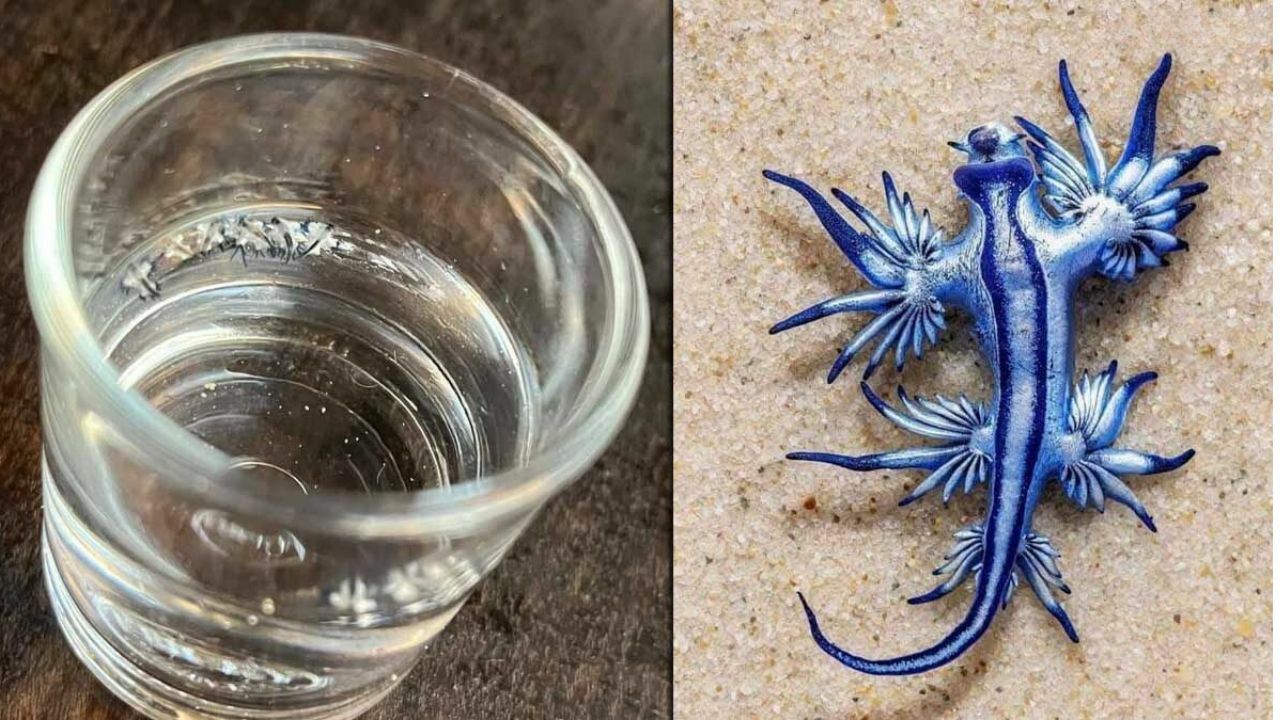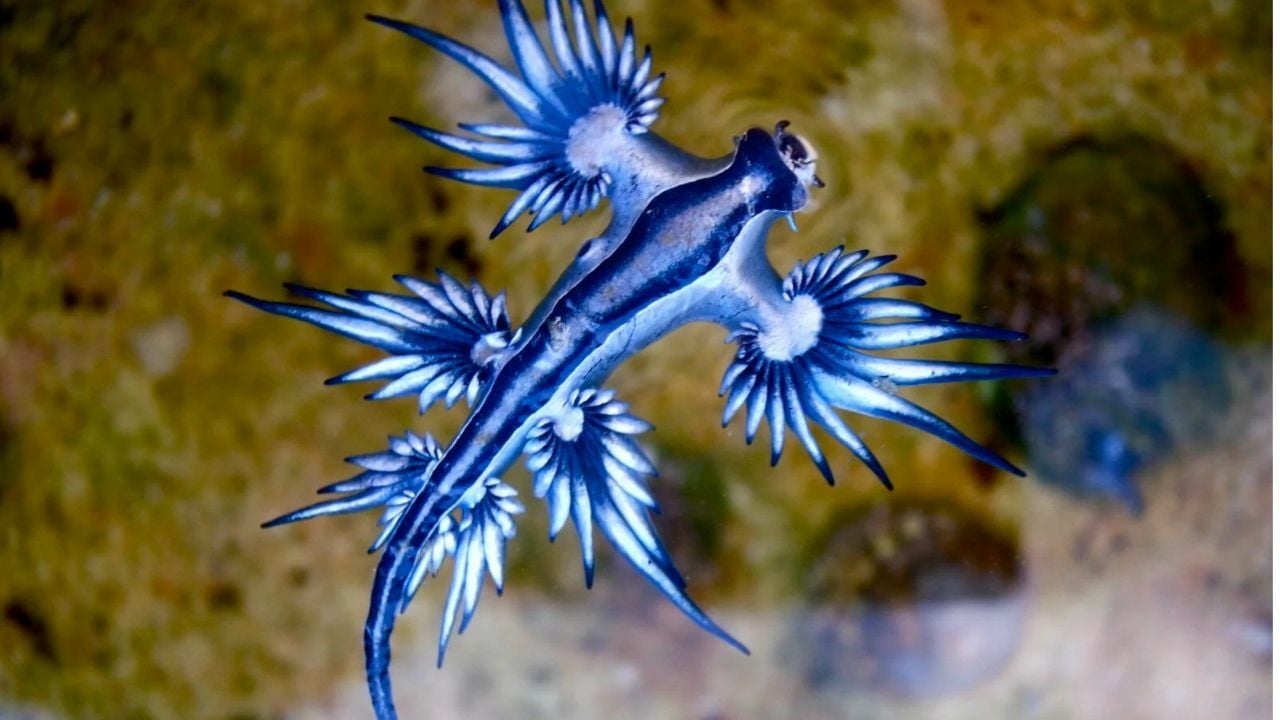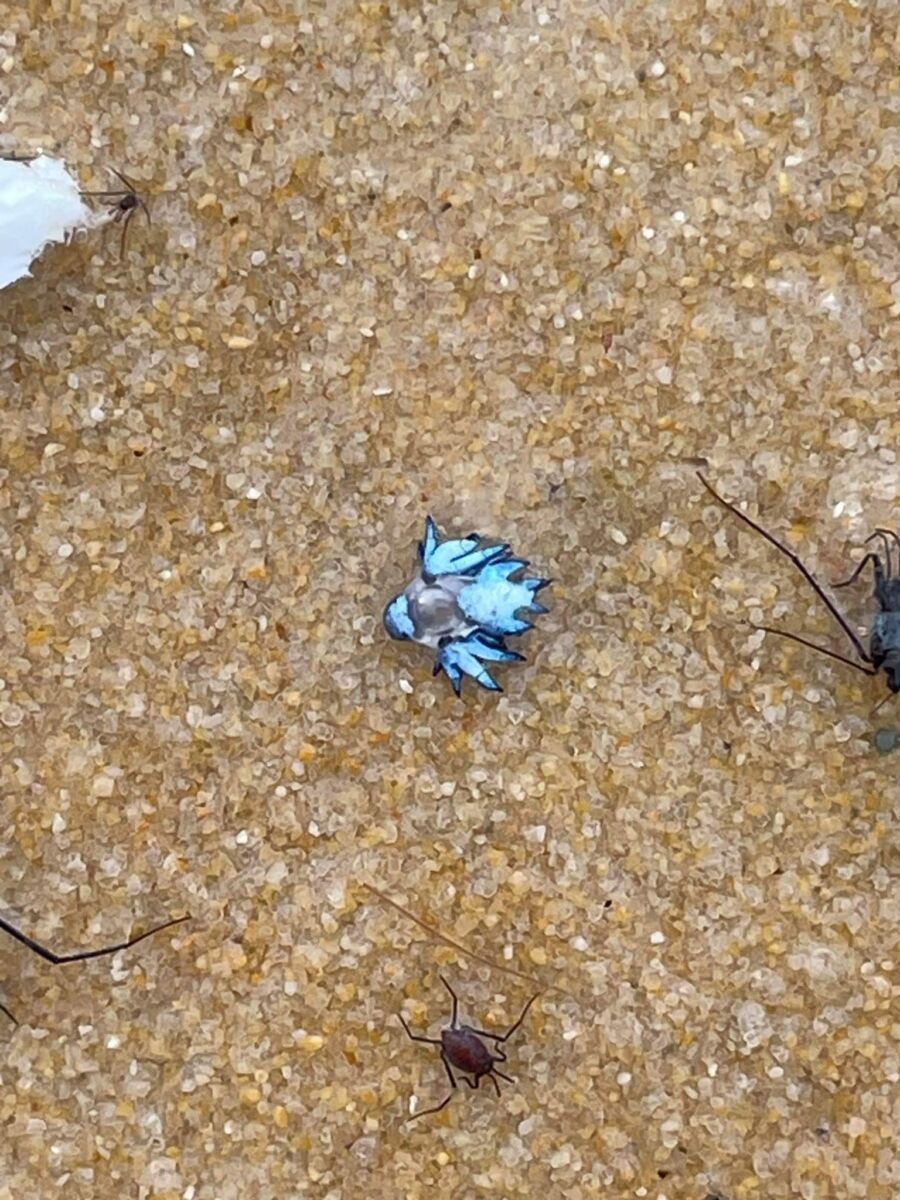Blue murder: Deadly sea dragon resurfaces off Phuket (video)
Tiny terror spotted at tourist beach after two-year disappearance

Holidaymakers in Phuket have been warned to steer well clear of the blue sea dragon, a venomous sea creature that looks like it’s flown straight out of a fantasy film but packs a real-life, potentially deadly sting.
The rare and otherworldly blue sea dragon, also known as Glaucus atlanticus, has made a surprise reappearance at Karon Beach after nearly two years out of sight. The alarm was raised after a Facebook page, MonsoonGarbage Thailand, posted a photo of the brightly coloured creature sitting inside a glass of water.
Measuring just 3 centimetres in length, the blue sea dragon is a type of sea slug, but don’t let its small size or dazzling beauty fool you, this creature is among the most venomous in the ocean.
“It might look like a miniature Pokémon, but touch it and you could end up in hospital, or worse,” a local marine expert warned.
The creature absorbs the toxic stinging cells of its prey, including fire jellyfish and fire coral, and stores them in its own tissue. This built-in arsenal makes it extremely dangerous to both predators and curious beachgoers.

The venom it can unleash may cause severe skin inflammation, nausea, dizziness, vomiting, and in extreme cases, even affect the heart and nervous system.
Marine scientist and lecturer from the Kasetsart University, Thon Thamromgnawasawat, advises those who accidently touch them to clean the affected body parts with vinegar, just like a jellyfish sting.
The sudden appearance of the blue dragon at one of Phuket’s most popular beaches has prompted urgent warnings from local officials, who are advising tourists not to pick up or even touch any strange sea creatures, no matter how stunning they appear.

“This is a reminder that beauty in nature often comes with danger,” said an official from the Department of Marine and Coastal Resources. “People must be aware and cautious, especially when swimming or walking along the beach.”
The blue sea dragon, despite its exotic appearance, is not a mythical beast but a fascinating sea slug found in warm tropical waters. Its natural habitat includes the Atlantic, Pacific, and Indian Oceans, and it is commonly found off the coasts of Australia, South Africa, and southern Europe.
Unlike most slugs that crawl along the seabed, the blue dragon floats upside-down near the water’s surface, using air stored in its body to drift with the ocean currents. This buoyancy helps it move quickly, blend into its surroundings, and ambush toxic prey with lightning-fast strikes.
Its vibrant blue and silver colouring helps it camouflage from predators both above and below the water. Viewed from above, it blends with the sea’s shimmering surface. From below, it mimics the colour of the ocean sky.
This unique survival strategy, combined with its lethal defence system, makes it one of the ocean’s most impressive invertebrates.
So far, no injuries have been reported in Phuket, but marine officials are on high alert and continuing to monitor the area closely, reported KhaoSod.
“Admire from a distance, but don’t get too close,” a lifeguard at Karon Beach told reporters. “This little dragon may be tiny, but it’s got a fiery bite.”
With Thailand’s beaches once again swarming with sun-seekers, officials hope awareness will prevent any nasty holiday surprises, because when it comes to the blue sea dragon, what you don’t know really can hurt you.
Latest Thailand News
Follow The Thaiger on Google News:


























